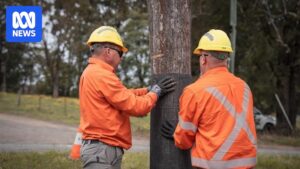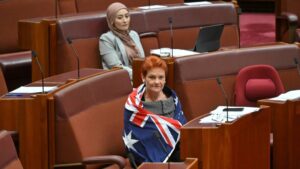
One Nation Senator Pauline Hanson is in the spotlight this week as she challenges a Federal Court ruling from November 2024. The court found her in violation of section 18C of the Racial Discrimination Act (RDA) due to a controversial social media post directed at Greens Senator Mehreen Faruqi. Hanson’s post, which told Faruqi to “piss off back to Pakistan,” was in response to Faruqi’s reaction to the death of Queen Elizabeth II, which Hanson deemed disrespectful.
The case has reignited debates around section 18C of the RDA, a provision that makes it unlawful to perform an act that is likely to offend, insult, humiliate, or intimidate someone based on race, color, or national or ethnic origin. Hanson’s appeal is not just a legal battle but also a focal point in the ongoing discourse about free speech and racial discrimination laws in Australia.
Understanding Section 18C
Section 18C of the Racial Discrimination Act has been a contentious part of Australian law since its inception. It states:
It is unlawful for a person to do an act, otherwise than in private, if:
(a) the act is reasonably likely, in all the circumstances, to offend, insult, humiliate or intimidate another person or a group of people; and
(b) the act is done because of the race, colour or national or ethnic origin of the other person or of some or all of the people in the group.
This section was introduced in 1995 as part of broader efforts to combat racial discrimination and promote social cohesion. However, critics argue that it impinges on free speech, while supporters maintain that it is crucial for protecting minority groups from racial vilification.
The Legal and Social Implications
The legal proceedings involving Hanson have sparked a broader conversation about the balance between free speech and the protection of individuals from racial discrimination. Legal experts are divided on the issue. Some argue that section 18C is essential for maintaining a respectful and inclusive society. Others believe it is too restrictive and stifles legitimate public discourse.
Dr. Sarah Jones, a legal scholar specializing in human rights law, commented, “Section 18C serves as a necessary safeguard against hate speech. It ensures that public discourse does not devolve into racial vilification, which can have severe social consequences.”
Conversely, free speech advocates like Professor Mark Thompson argue, “While the intention behind 18C is noble, its application can sometimes overreach, potentially curbing free expression in a democratic society.”
Historical Context and Comparisons
The debate over section 18C is not new. It has been a point of contention in Australian politics for decades. In 2011, the section gained significant attention during the case involving columnist Andrew Bolt, who was found to have breached 18C with articles about “fair-skinned” Aboriginal people. The ruling led to calls for reform, which have persisted over the years.
Internationally, Australia’s approach can be compared to similar laws in countries like Canada and the United Kingdom, where hate speech laws also aim to balance free expression with protection against discrimination. These comparisons often highlight the complexity of legislating speech and the varying degrees of tolerance for offensive language across different cultures.
Looking Ahead: The Future of Section 18C
As Hanson’s case proceeds, the outcome could have significant implications for the future of section 18C. A ruling in her favor might embolden calls for reform or repeal of the section, while a decision upholding the original ruling could reinforce its current application.
Meanwhile, the case highlights the ongoing challenge of navigating free speech in a multicultural society. As Australia continues to grapple with these issues, the discussion around section 18C will likely remain a pivotal part of the national conversation on race, rights, and responsibilities.
The next steps in Hanson’s legal journey will be closely watched by both supporters and critics of section 18C, as the court’s decision could shape the landscape of racial discrimination law in Australia for years to come.







